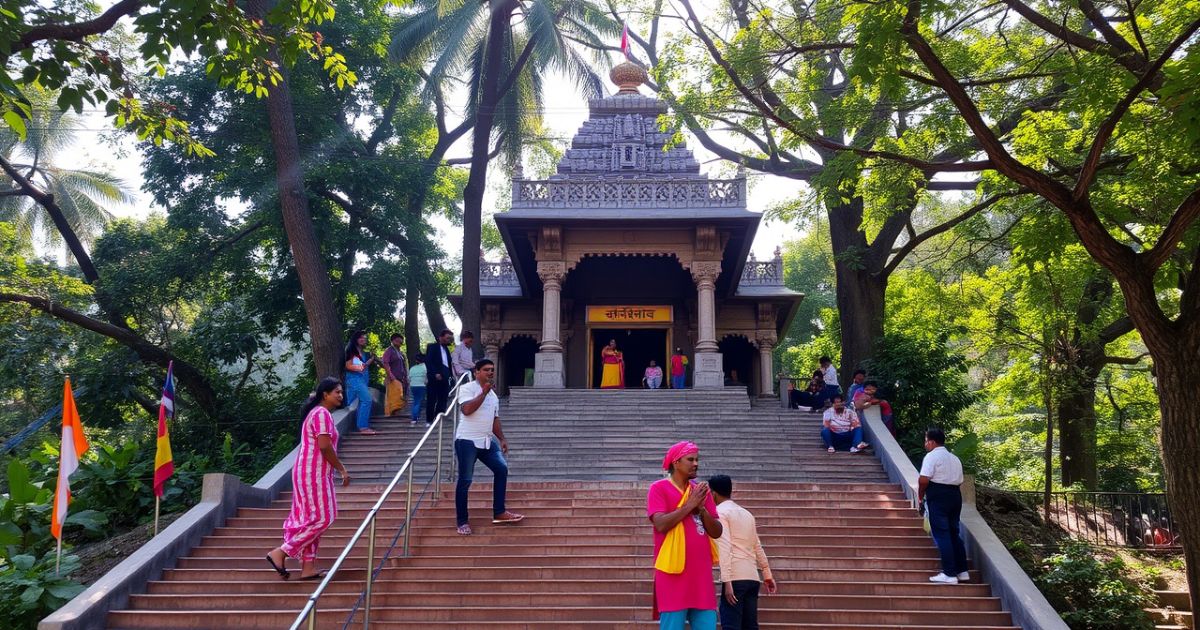Sometimes, you just feel this strong pull to escape the noise of everyday life and find peace somewhere calm and meaningful. I kept hearing about a place tucked away in the hills Malluru Narasimha Swamy Temple: A Spiritual Journey to the Hilltop and the name alone made me curious. What makes this temple so special that so many people travel uphill just for a glimpse of it? I needed to find out if it was truly worth the journey.
In this blog post, I’ll walk you through everything you need to know about visiting Malluru Narasimha Swamy Temple from its rich spiritual history to the scenic route that leads you there. Whether you’re a pilgrim, a traveler, or just spiritually curious, this guide will help you plan your visit with ease. Let’s dive into the peaceful hilltop experience that’s waiting for you.
Tourist places near Hemachala Narasimha Temple
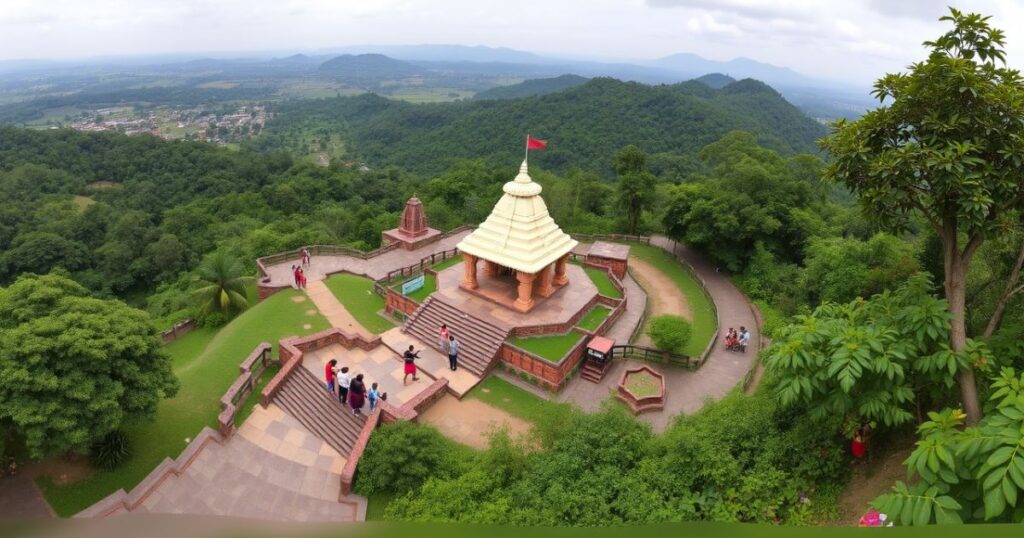
If you’re planning a visit to the sacred [Malluru Narasimha Swamy Temple], it’s worth taking a little extra time to explore nearby attractions. The surrounding region in [Karnataka] is dotted with lesser-known yet spiritually uplifting spots that complement your pilgrimage. From serene village shrines to age-old statues nestled in forests, each place holds its own story.
One of the standout nearby locations is the Veerabhadra Temple in Lepakshi, known for its unique hanging pillar and intricate carvings. Additionally, devotees often stop by small, scenic viewpoints scattered along the hill roads that provide stunning views of the valley a perfect setting to reflect and meditate.
The Sacred Chintamani Jalapatham

Not far from the temple, [Chintamani Jalapatham] flows quietly through the terrain, offering visitors a place for spiritual cleansing and peace. Believed to be blessed by the deity, this water stream is often used by pilgrims for ritual baths before they ascend the hill.
The area around Jalapatham is peaceful, shaded with trees, and filled with birdsong, making it ideal for quiet prayer or relaxation. Many visitors claim they feel spiritually recharged just by spending a few minutes near this sacred water source.
Unique Features of the Temple
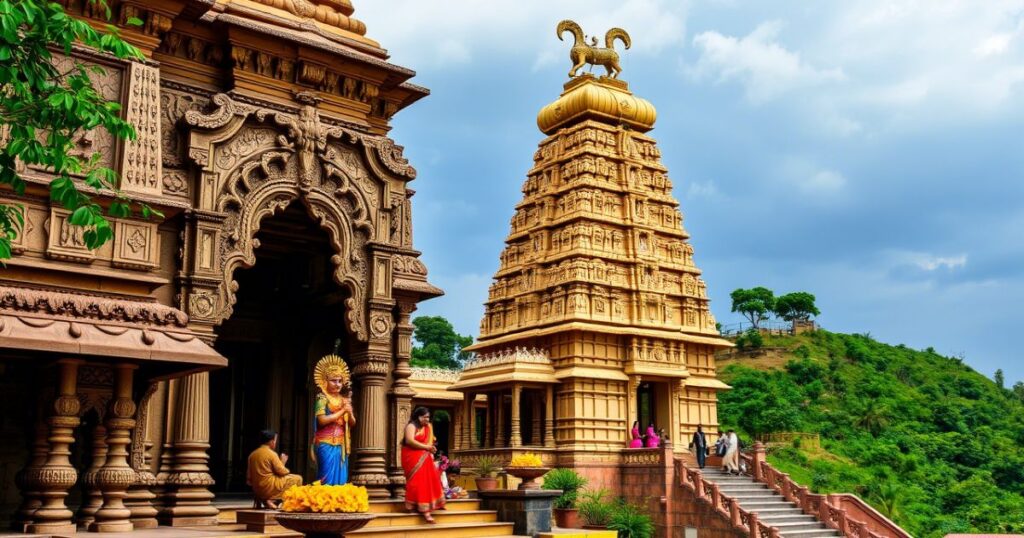
What sets the Malluru Narasimha Swamy Temple apart is its dramatic hilltop location and mystical aura. As you climb toward it, you’re not just ascending a physical hill you’re taking a [spiritual journey to Malluru]. The temple architecture reflects [ancient South Indian styles], with tall gopurams, intricate pillars, and sacred carvings.
One particularly unique feature is the idol of [Narasimha Swamy] himself, said to be self-manifested (Swayambhu). Devotees believe his fierce yet protective gaze wards off evil, and the temple vibrations are especially strong during evening [Darshan].
Festivals at Malluru Narasimha Swamy Temple
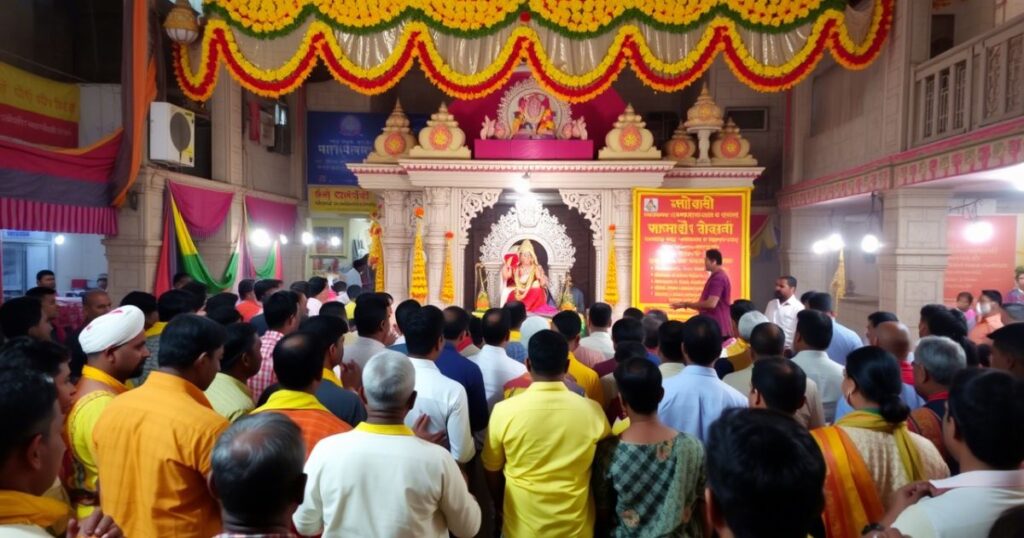
The temple hosts a number of vibrant festivals throughout the year, drawing [Narasimha Swamy devotees] from across [Karnataka] and beyond. Among the most significant is Narasimha Jayanti, which celebrates the Lord’s appearance and is marked by elaborate rituals and dramatic reenactments of mythological stories.
Another popular celebration is the annual Brahmotsavam, where the deity is taken around the hill in a beautifully decorated chariot. These events aren’t just rituals they’re emotionally charged community gatherings that celebrate faith, tradition, and divine power.
Best Time to Visit

The best time to visit Malluru is between October and March when the weather is cool and pleasant for both trekking and temple activities. Early mornings offer a serene atmosphere with misty views and fewer crowds, enhancing the spiritual experience.
Avoid the monsoon months, as the climb can get slippery and less enjoyable. During major festivals, while the area gets crowded, the energy and spiritual excitement make it worth the visit.
Tourist Attractions Near Hemachala Narasimha Temple
Besides religious sites, the area around Hemachala offers plenty for nature lovers and cultural explorers. Forest trails, heritage wells, and ancient stone carvings are scattered through the region, offering plenty of opportunities for discovery.
You can also explore small village markets nearby that sell handmade crafts, temple offerings, and delicious local snacks. These little experiences add rich flavor to your pilgrimage.
How to Reach Hemachala Narasimha Swamy Temple

Reaching the temple is part of the pilgrimage adventure. The closest major city is [Bangalore], located about 160 kilometers away. You can take a train or bus to nearby towns like Chintamani or Mulbagal, and then hire a cab or auto-rickshaw for the rest of the way.
The final stretch involves a climb up a scenic hill trail. If you’re wondering [how to reach Malluru temple] efficiently, early morning private transport is your best bet. There are also shared jeeps available during peak times.
Rituals and Festivals at Malluru Narasimha Swamy Temple
Daily rituals include morning abhishekam, mid-day pooja, and evening aarti. Devotees are welcome to bring offerings like coconuts, flowers, and ghee lamps. Each ritual is carried out with deep reverence and traditional Vedic chanting.
Special [Darshan] tickets are available during festivals, allowing devotees closer access to the main deity. The temple priests are friendly and helpful, ensuring that each visitor has a meaningful spiritual experience.
Tourist Attractions Near Hemachala Narasimha Temple
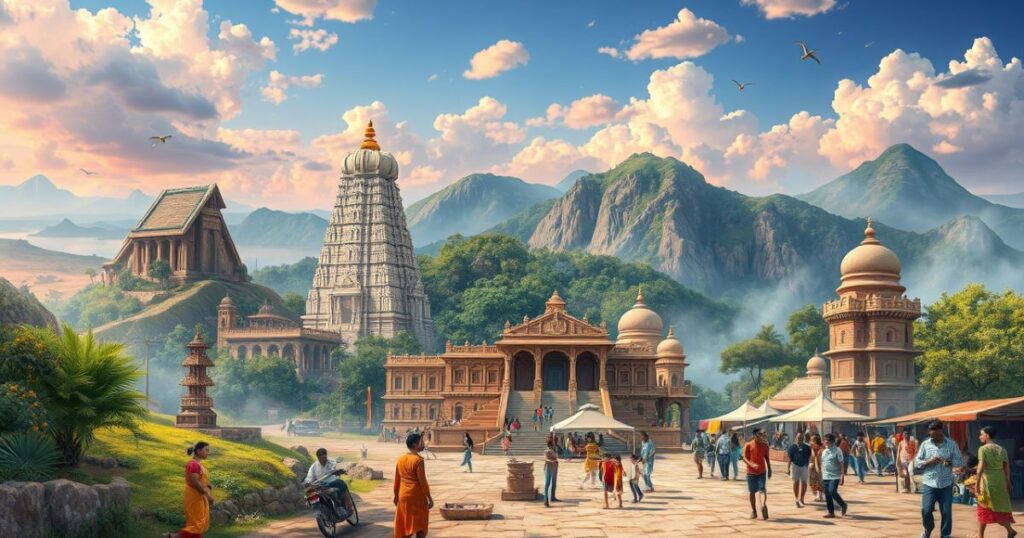
While visiting the area, consider taking a nature walk around the temple base. The surrounding forest offers peaceful spots for meditation and bird watching. Local guides can also take you to hidden caves believed to have been used by ancient sages.
Another lesser-known gem is the old stone mantapas (pillared halls) scattered through the woods. They offer a glimpse into the region’s spiritual past and architectural legacy.
Mysteries of Malluru Narasimha Swamy Temple
Many believe that the temple holds hidden energies due to its location on a [hilltop] and its unique magnetic rock formations. Some even say their prayers manifest faster here. The [temple on hilltop] is often wrapped in a foggy mist, adding to its mystical charm.
One popular legend claims that a secret underground tunnel connects the temple to another nearby shrine, though no one has found its entrance. Whether you believe in miracles or not, the temple definitely makes you feel something beyond the ordinary.
Malluru Narasimha Swamy Temple Darshan Timings
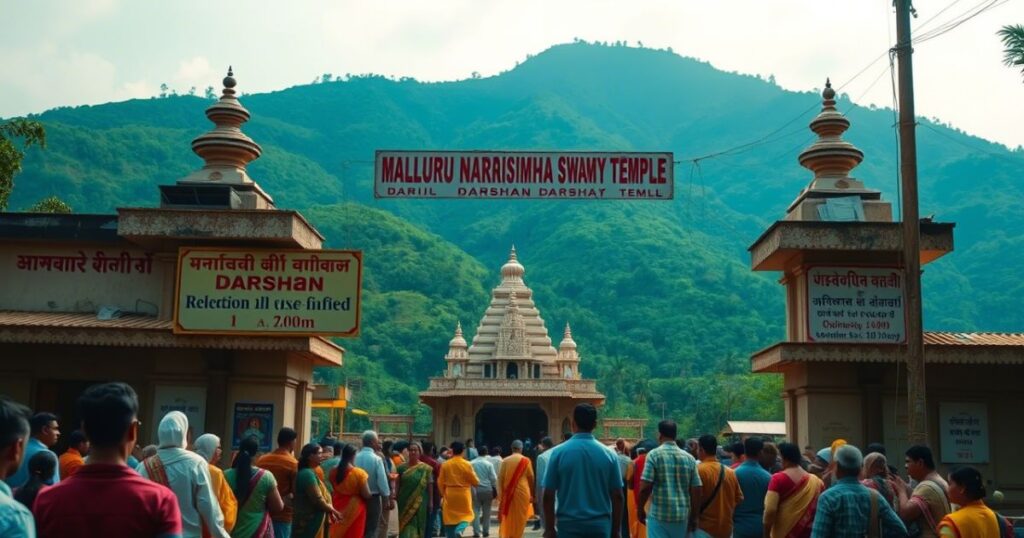
The temple usually opens by 6:00 AM and closes around 8:00 PM. Peak [Narasimha Swamy Darshan timings] are during early morning and just before sunset, when the atmosphere feels especially divine.
If you want a more personal experience, arrive just after the temple opens. The priests also recommend visiting on Thursdays and Saturdays for maximum spiritual benefit.
Hotels near Malluru Swamy Temple
Accommodation options around the temple are modest but comfortable. There are a few budget lodges and guesthouses run by temple authorities or local families. For a more premium stay, you may need to book a hotel in Chintamani or Mulbagal.
It’s best to book rooms in advance during festival seasons. Many pilgrims also prefer staying overnight to attend both morning and evening rituals.
Narasimha Swamy Temple Opening & Closing Time
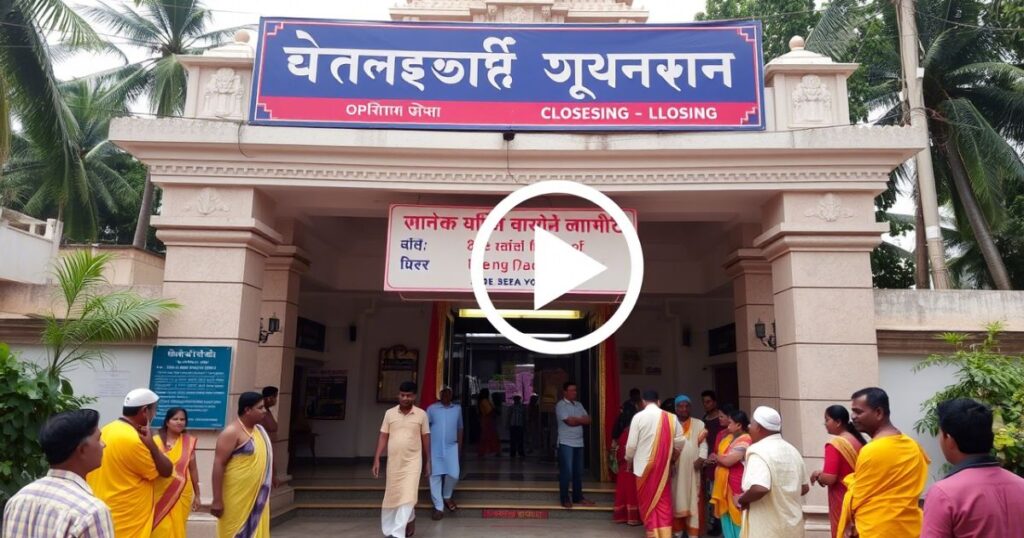
Officially, the [Narasimha Swamy Temple opening & closing time] is from 6:00 AM to 8:00 PM. On special days or during extended rituals, timings may vary, so it’s always good to check in advance.
The temple usually observes a short closure break in the afternoon around 1:00–3:00 PM. Plan your visit accordingly to avoid waiting.
Malluru Narasimha Swamy Temple Timings
Aside from daily schedules, festival days can have extended or altered pooja slots. Devotees should check notice boards at the temple or the official website, if available.
For smooth darshan, arrive early and follow the [Malluru temple dress code] traditional attire is preferred, and footwear must be removed before entering the inner sanctum.
Malluru Narasimha Swamy Temple History

This [ancient temple in Karnataka] has roots that go back several centuries. Historical texts and oral traditions link it to the Vijayanagara Empire and earlier dynasties who supported temple culture across South India.
Over time, the temple has survived invasions, weather, and political changes yet its sanctity remains untouched. The [Mallur Narasimha temple architecture] reflects a blend of Dravidian style with local elements, telling stories in stone about gods, demons, and cosmic battles.
FAQS
What is the speciality of Malluru Narasimha Swamy Temple?
The speciality of the Malluru Narasimha Swamy Temple lies in its powerful spiritual aura and location on a scenic hilltop. The temple is dedicated to Lord Narasimha, an incarnation of Lord Vishnu known for protecting his devotees from evil. It’s believed that the main idol is Swayambhu (self-manifested), and many devotees claim they feel an immediate sense of peace and divine energy upon visiting.
How many steps are there in Mallur Narasimha Swamy Temple?
To reach the temple, visitors must climb approximately 300–350 steps. The steps wind through lush greenery and scenic surroundings, making the climb spiritually uplifting as well as visually refreshing. Many pilgrims take this uphill walk as a form of devotion and penance.
What is the timing of Mallur Narasimha Swamy Temple?
The temple typically opens at 6:00 AM and closes by 8:00 PM. There’s usually a short break in the afternoon, around 1:00 PM to 3:00 PM, when the temple remains closed. Early morning and evening are the best times to visit for peaceful Darshan and rituals.
What are the benefits of Narasimha Swamy?
Worshipping Narasimha Swamy is believed to bring protection, courage, and relief from fear and anxiety. Devotees seek his blessings to overcome obstacles, ward off negative energies, and find mental peace. Many also believe that sincere prayers to Lord Narasimha can bring justice and shield them from evil forces.
What is the history of Narshya Narasimha Temple?
The Narshya (or Malluru) Narasimha Temple is said to date back to the Vijayanagara era or even earlier. It has strong roots in Karnataka’s ancient temple tradition and reflects classic Dravidian architecture. Legends say the temple was built on a spot where the Lord appeared to a devotee in distress. Over centuries, it has remained a powerful center of pilgrimage and faith, drawing thousands of visitors annually.
Conclusion
Visiting the Malluru Narasimha Swamy Temple isn’t just a trip—it’s a peaceful, spiritual experience that stays with you long after you leave. Whether it’s the sacred hilltop climb, the powerful darshan, or the rich history, every moment here feels deeply meaningful.
From the temple’s unique architecture to its festive celebrations and tranquil surroundings, there’s so much to take in. If you’re looking for a soulful escape in Karnataka, this ancient shrine is the perfect blend of devotion, tradition, and serenity.

